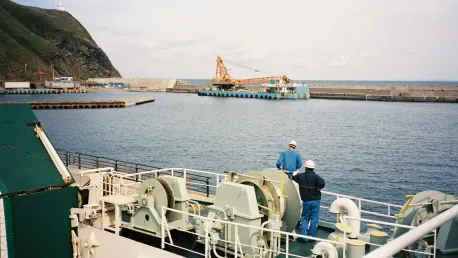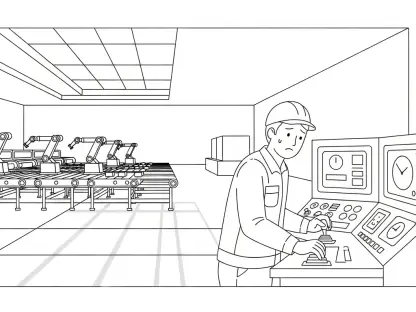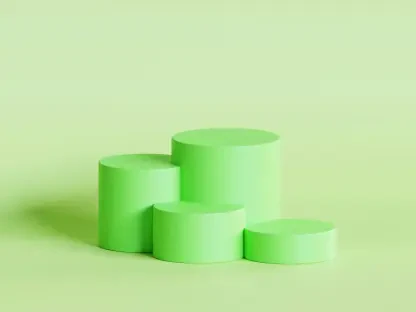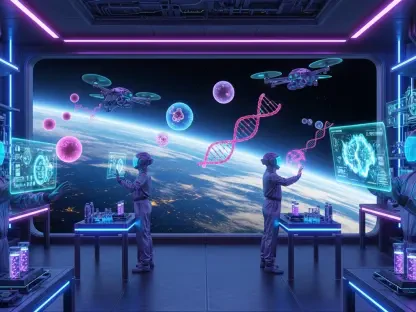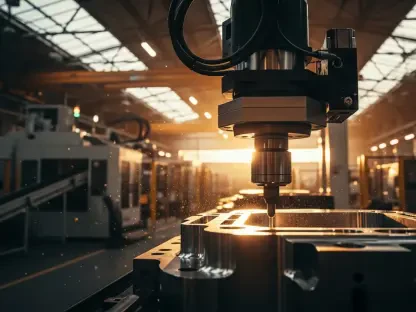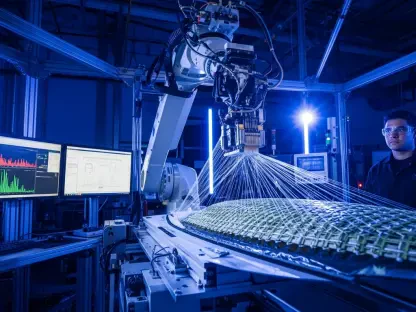The International Association of Classification Societies (IACS) has introduced Rec.186, a new recommendation designed to incorporate additive manufacturing (AM), commonly known as 3D printing, into marine and offshore applications. This development indicates a significant leap in the maritime industry’s adoption of innovative manufacturing technologies aimed at boosting both efficiency and sustainability in shipbuilding and offshore operations.
Advancements in Additive Manufacturing
Unique Advantages of AM
Additive Manufacturing (AM) brings multiple advantages over conventional manufacturing techniques such as casting, forging, and welding. Unlike traditional methods, AM reduces material waste, supports on-demand production, and offers greater flexibility in design. This advanced technology operates by fusing materials to create objects from a digital 3D model, enabling localized production and customization. This capacity to tailor solutions directly benefits specialized marine and offshore applications by addressing specific needs and challenges.
Recommendation 186 provides detailed guidelines for the qualification, approval, and certification of additively manufactured metallic parts. This encompasses comprehensive instructions on all essential aspects of the AM process, including part design, feedstock selection, AM processes, post-processing, and inspection/testing. The recommendation aligns with existing international standards such as ISO/ASTM 52900 and AWS D20.1, ensuring that the technology meets established Unified Requirements, particularly UR W for materials and welding, to guarantee equivalent safety and reliability.
Detailed Insights into Rec. 186
To ensure the safe and efficient integration of AM, Rec. 186 covers several critical areas. First, it specifies the scope of AM processes, including Powder Bed Fusion (PBF), Directed Energy Deposition (DED), and Binder Jetting (BJT), along with detailed process-specific parameters. This clarity ensures that all stakeholders understand the requirements and limitations of different AM techniques.
The recommendation also emphasizes the importance of criticality levels and testing. By featuring tiered testing levels (AM Levels 1-3) for class and certified items, Rec. 186 allows for customized testing based on the application’s criticality. This approach ensures that the rigor of testing is aligned with the importance and function of the component being produced. Additionally, stringent qualification processes for AM feedstocks are outlined, including protocols for recycling, reinforcing the sustainable aspect of AM.
Implementation and Impact on Marine Industry
Part Design and Qualification
Rec. 186 offers substantial guidance on optimizing part design and qualification for marine environments. It focuses on design optimization strategies, topology adjustment, and pre-build simulations to guarantee that the manufactured parts perform robustly under marine conditions. These aspects of the recommendation provide manufacturers with the tools needed to enhance the durability and functionality of AM parts, ensuring they meet the stringent demands of maritime operations.
The recommendation also addresses inspection and non-destructive testing (NDT). Recognizing that anisotropic properties and potential imperfections are inherent in AM processes, Rec. 186 advocates for advanced NDT methods such as CT scans. These advanced inspection techniques are pivotal in identifying and addressing any irregularities in AM parts, thereby ensuring their reliability and safety. This comprehensive approach to part qualification underscores the IACS’s commitment to maintaining high standards of quality and safety in the adoption of AM technologies.
Collaborative Efforts and Future Prospects
Rec. 186 establishes a foundational framework to ensure that AM technology is adopted safely and effectively in critical marine contexts. IACS intends to continue collaborating with stakeholders to broaden the use of AM in safety-critical marine components. Alexandre Astruc, Chair of IACS’s Expert Group on Materials & Welding, highlighted that while additive manufacturing’s potential for rapid production is significant, its true strength lies in delivering innovative, on-demand solutions tailored to complex maritime challenges. Rec. 186 aims to safeguard AM’s benefits by establishing a standardized framework for verification and certification that builds confidence among all parties involved.
This collaborative effort aims to further integrate AM into the marine and offshore industries, paving the way for innovative and efficient manufacturing solutions. By working closely with industry partners, IACS seeks to expand the application of AM, driving progress and setting new benchmarks in marine manufacturing.
Future Directions and Summary
The International Association of Classification Societies (IACS) has introduced a new recommendation, Rec.186, aimed at incorporating additive manufacturing (AM), widely known as 3D printing, into marine and offshore applications. This marks a significant advancement in the maritime industry’s embrace of innovative manufacturing technologies. By integrating 3D printing, the sector aims to enhance both efficiency and sustainability in shipbuilding and offshore operations. This move reflects a broader trend within the industry towards adopting cutting-edge technologies to improve performance and reduce environmental impact. Not only does this recommendation open up new possibilities for more streamlined production processes, but it also supports the ongoing pursuit of eco-friendly practices within the maritime sector. As the maritime industry continues to evolve, the adoption of 3D printing can lead to quicker and more cost-effective manufacturing solutions, boosting overall operational effectiveness while meeting sustainability goals.
